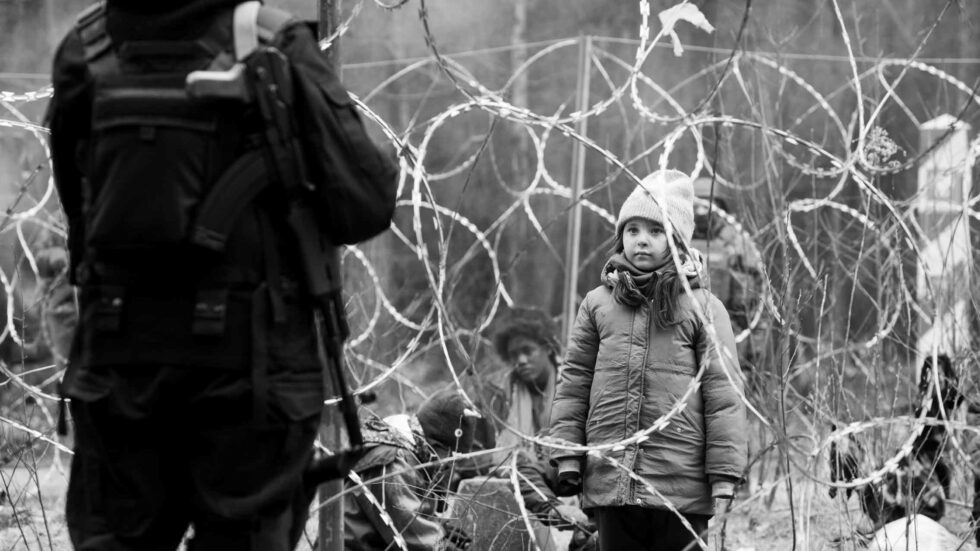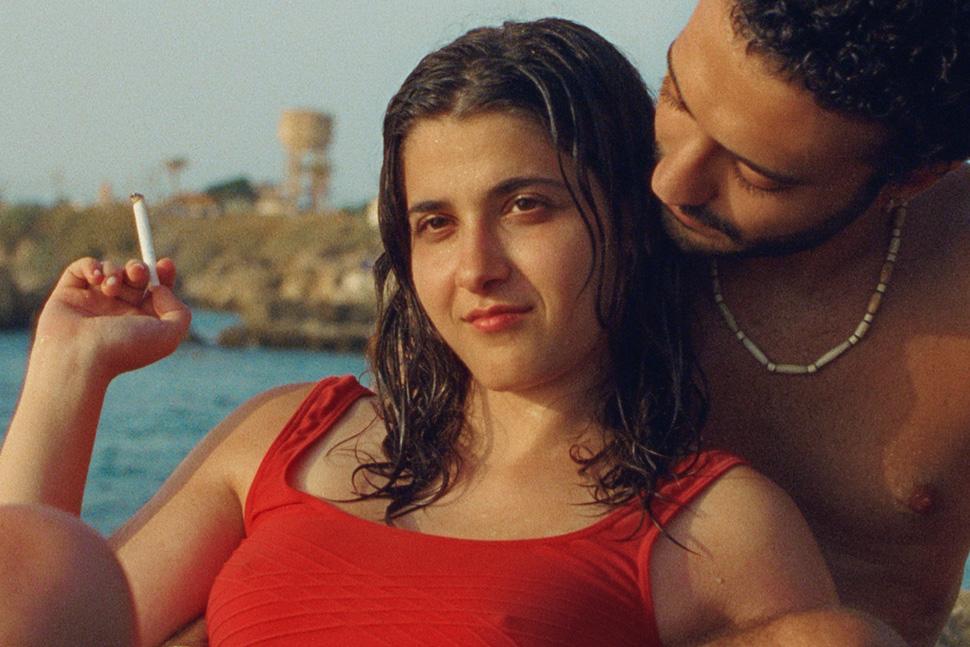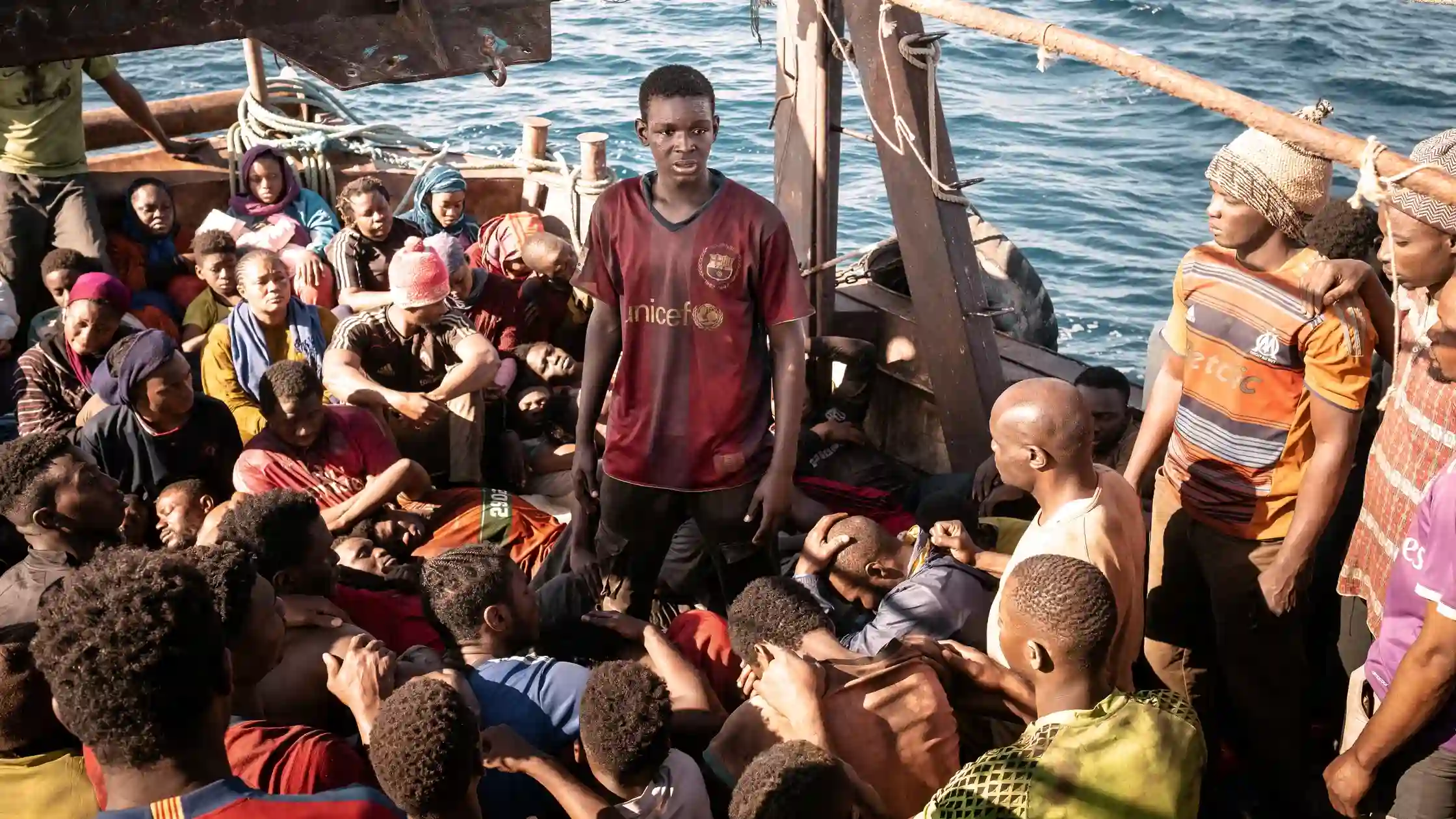The judges of the eightieth Venice International Film Festival found quite a lot of themes from important current events in the competing works they evaluated. There were few objections to the Golden Lion (the award for best film) going to the generally appreciated Povere Creature! by Yorgos Lanthimos, while there was more discontent aroused by the Coppe Volpi (awards for best actor and actress) going to the actors Cailee Spaeny in the film Priscilla and Peter Sarsgaard in the film Memory. The strongest choice of the judges, led by the director Damien Chazelle, were two films wanted to be among the winners, both films on the topic of migration: the two films, thematically similar and screened within a day of each other, immediately appeared very different.
An untold border: “Green Border” by Holland

Green Border, by Agnieszka Holland (2023)
The Special Jury Prize went to Green Border by Agnieszka Holland, one of the most powerful and memorable works of Venice 80. Belarus and Poland: one of the least talked about borders of the European Union, due to the Polish government making the areas “special zones,” closed to civilians, the press, and humanitarian associations. The Polish border guards can thus violate international laws of the right to asylum with impunity.
Those who escape from Syria, Afghanistan, or other parts of the world, attempt to enter Europe passing through Belarus, lured by the Lukashenko regime which can use them as an “improper weapon” against the EU. The people are treated like sacks of potatoes: Byelorussians pass them to Poland, the Polish take them and send them back to Belarus, and so it goes, over and over. To get rid of them sooner, Poland illegally prevents those in its territory from asking for political asylum. The story teaches that the worst atrocities are done in secret.
Finally, Holland shows the events from more points of view: from the migrants, from the soldiers (and their families), and from the activists who helped the migrants. Lastly, from a psychologist who decided to go beyond the limits of legality to help those in need, devastated by how much she discovered. The film, shot in black and white and realistic, does not omit anything the Polish government would want to conceal. It seems impossible that some soldiers would pick up a pregnant woman off the ground and forcefully throw her over the barbed wire of the border: this film shows the impossible, but unfortunately also the reality, albeit reenacted. Holland doesn’t draw a clear moral line between good and bad; in every people, even in her own, there are both.
Perhaps they even share a social and work environment. It is evident where the injustice lies, and the urgency of the condemnation is pressing: the best civil cinema possible successfully uses the medium of cinematography to both inform and provoke emotion.
“Me captain”, the anesthetized drama by Garrone
Matteo Garrone, awarded the Silver Lion for best director for Me Captain, told of another route better known to us: We follow the journey of two Senegalese kids who hope to get to Italy to become musicians (one of the two is played by Seydou Sarr, the winner of the Mastroianni Award for young actors).
They are economic migrants, and their journeys are not any less dangerous than those through some of the Balkan routes: they need to face the desert, the cruel Libyan militia, and the hidden dangers of the Mediterranean. Garrone has his characters and the sensitivity of the audience close to heart, so he doesn’t show anything too atrocious. He makes the journey of his heroes a kind of painful tale, with some dreamlike moments, based on a hyper-realistic style that has imaginative elements in every aspect of reality (in fact there is no clear-cut stylistic difference even from when he brought an actual fable like that of Pinocchio to the screen).
All of the worst stays strictly off-screen, as if it were not necessary to show, perhaps because we already know it all, perhaps to avoid a sort of explicit exhibition of the pain, as represented by a privileged white person who has never experienced it. What will we remember from the film if the images of the story are too powerful? What if the stories of real survivors are more dramatic? It is certainly a touching, intense work, but also a little anesthetized.
The pain is only lightly touched on, but this way it is easier to forget it (which is unlikely to happen with Holland’s film): there is no real answer, but one cannot help but wonder if this is really the right way to talk about the migratory routes between Africa and Europe.
Two fragilities in “Casablanca” by Adriano Valerio
To leave or to stay: the themes we found in many films of Venice 80, even in the collateral sections. This is Fouad’s dilemma; he wants to return to Morocco but cannot because he lives in Italy without documents. In the documentary Casablanca by Adriano Valerio (who’s in the Notti Veneziane delle Giornate degli Autori), we observe his close relationship with an equally lonely and marginalized woman, Daniela, of a nature both rare and generous.
It’s a human relationship that is difficult to define, which in certain moments seems like a delicate necessity, and sometimes clashes with the ugliness of reality: the director had the patience and the fortune to find two people who aren’t afraid to show him their fragility for years. A patience that Fouad risks losing because he hasn’t seen his mother for 10 years.
He’s unable to obtain a residence permit, which would let him move back and forth legally, not even to treat his joint disease, which isn’t taken seriously enough by Italy: he doesn’t know whether to wait, whether to stay with Daniela, or whether to leave Italy forever to see his mother again.
“Sea Salt” by Leila Basma: From Lebanon to Canada

Sea Salt by Leila Basma (2023)
The situation of the teenager Nayla, the main character of Sea Salt by Leila Basma (with Horizon Short Films), is certainly less dramatic: her brother wants to take her with him to Canada, but she would prefer to stay in Lebanon to study at Beirut, perhaps also because she is experiencing her first love.
Still, even in her, as well as in her friends, we see the strong tension between staying in the place that one loves but that doesn’t offer many prospects, and seeking fortune elsewhere: for her, fortunately, it is still just a distant thought that accompanies her emotional maturation on a beautiful summer day on the seashore.
But Nayla is but one of the many people who sooner or later could become migrants, in a more or less lawful and more or less dangerous way: her gaze that desires freedom gets lost uncertainly towards the horizon, but in the end it is the gaze of others (even ours) that it avoids, perhaps swallowed up by the sea that has become a dangerous boundary to cross everywhere.
Translation from Italian to English by Sarah Jorgensen (JFRC).





